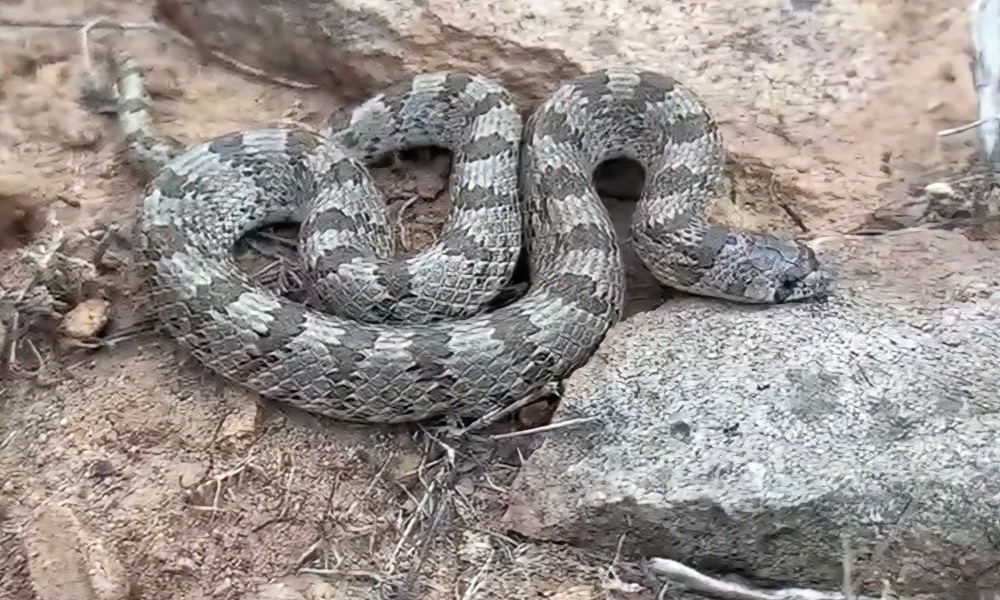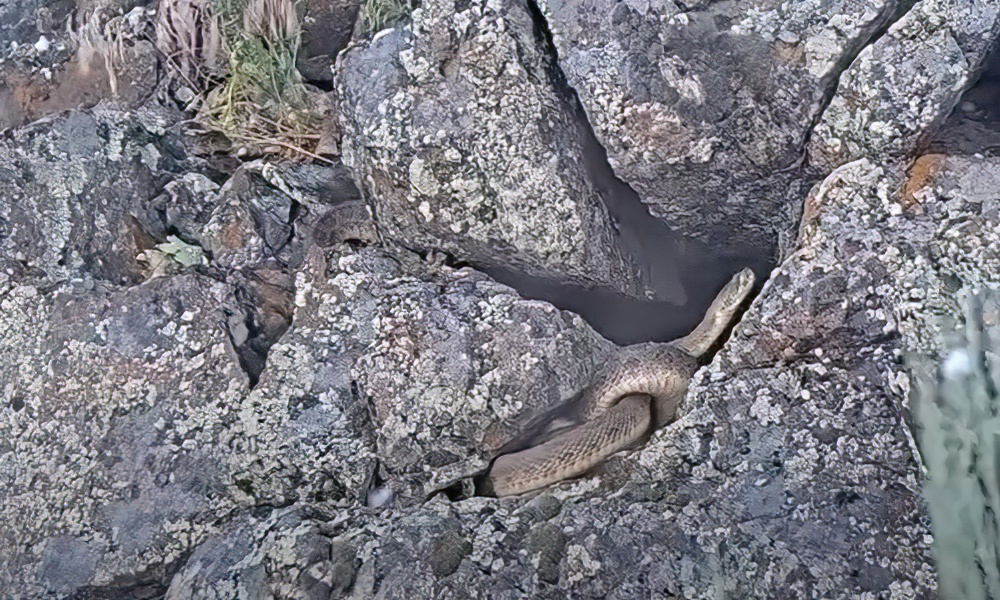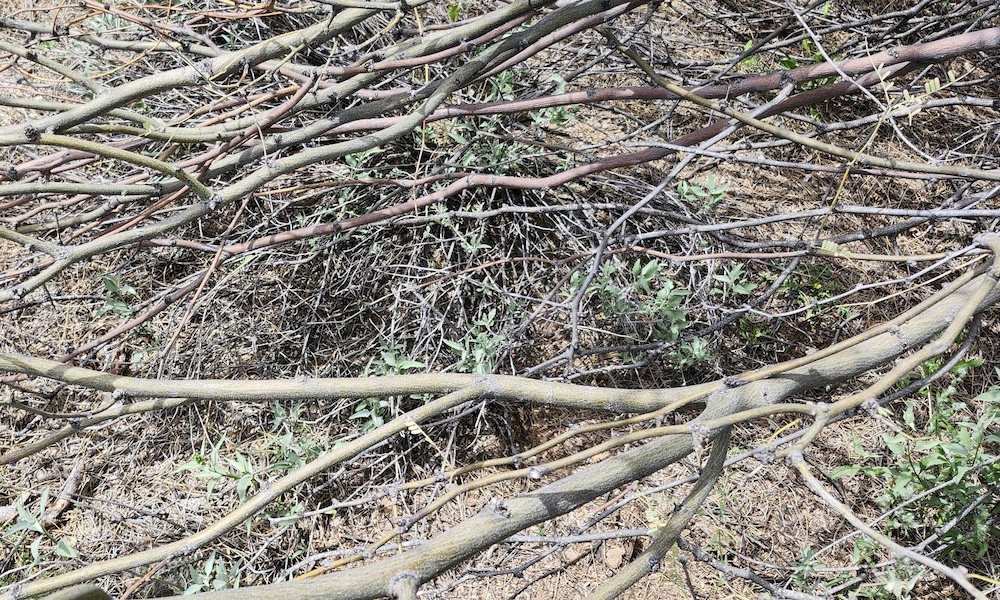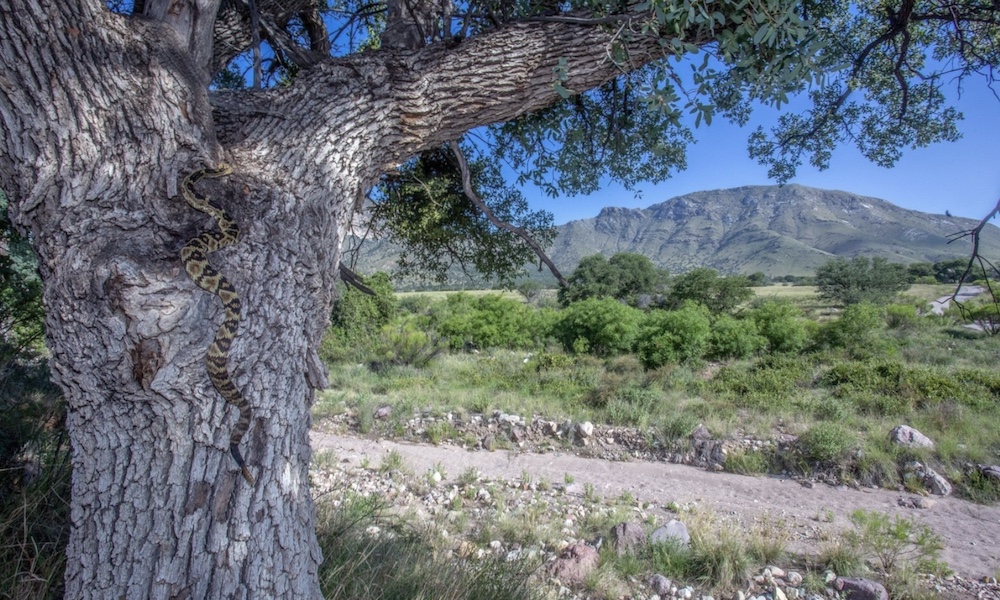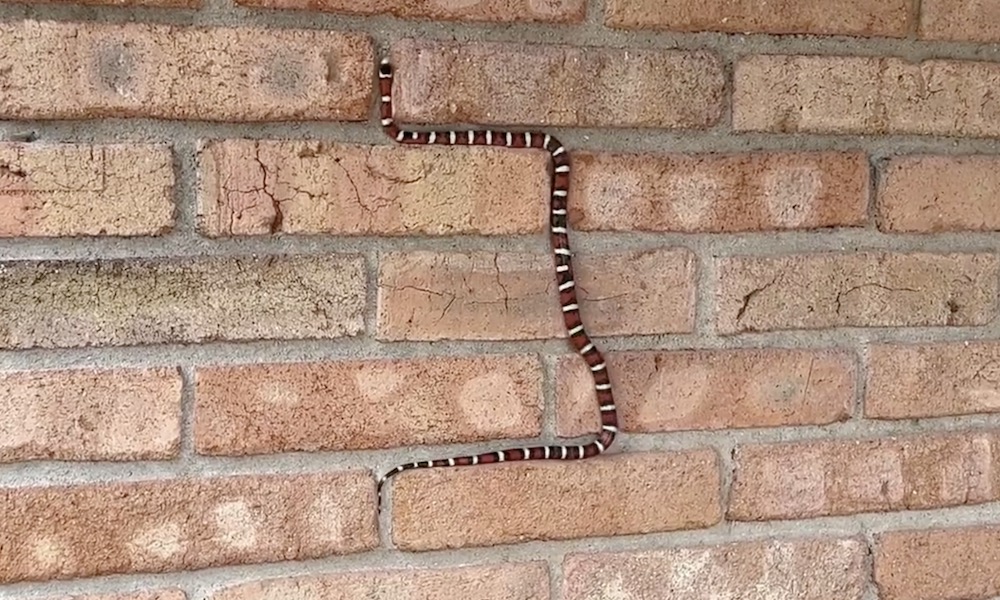–In May we featured an image from Arizona as part of a quiz challenging readers to spot a camouflaged rattlesnake. Below is a repost for those interested in testing their spotting skills.
An Arizona company that relocates rattlesnakes reported by concerned residents has been busy dealing with snakes flushed by rain from more remote hiding spots.
Rattlesnake Solutions shared the accompanying image showing one such reptile: a western diamondback rattlesnake hiding in a new and “less ideal” spot near a Tucson home.
Can you spot the rattlesnake in the accompanying image? (Answer at the bottom of this post.)

It’s a difficult quiz for many because only a small part of the snake is visible. Dozens of followers chimed in on the Rattlesnake Solutions Facebook post.
A sampling:
– “Nope. I’d be dead.”
– “Wow! Best camouflage ever.”
– Took me about 5 minutes, that’s crazy camo.”
– “That was tough. Excellent camouflage.”
– “I finally found it.”
Rattlesnake Solutions waited hours before sharing the answer in a separate post. Click here to view that image, showing the snake circled in red.
[lawrence-auto-related count=3 category=421396721]
